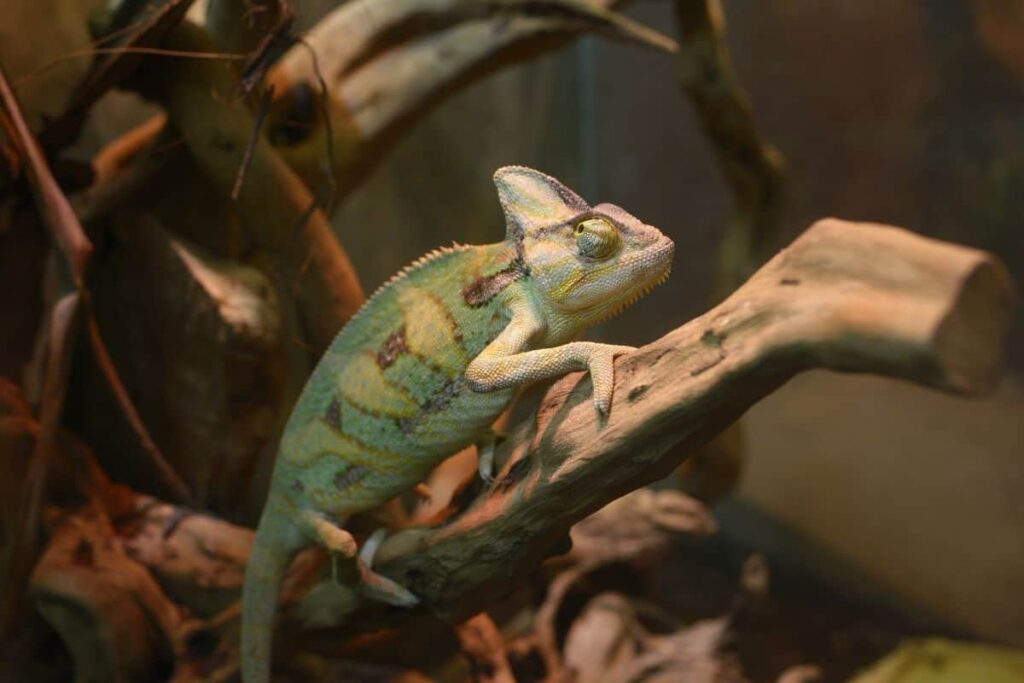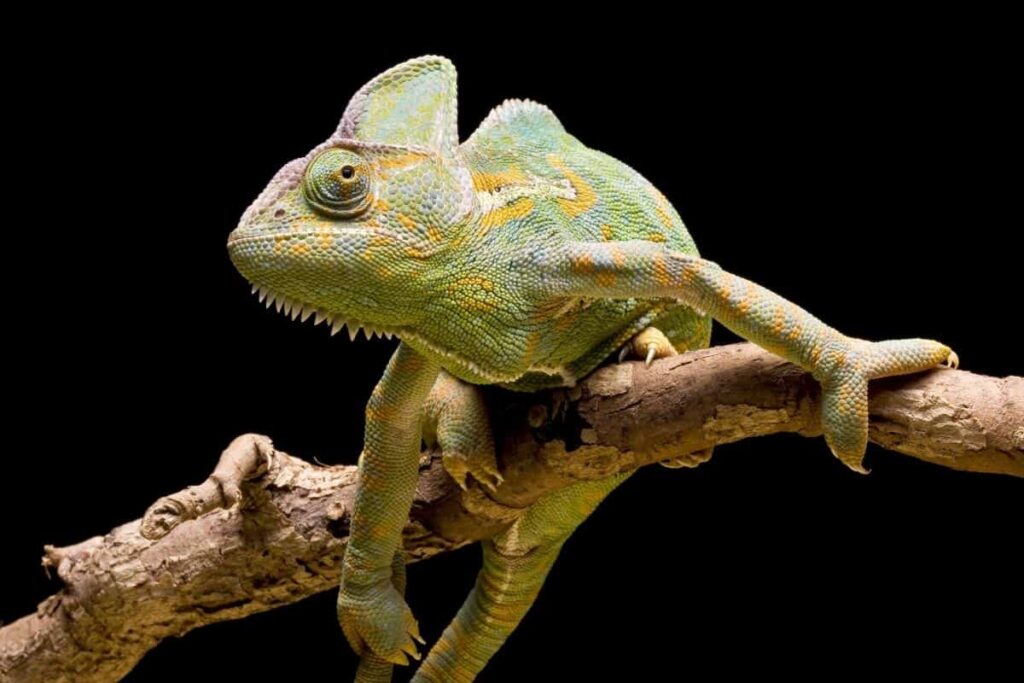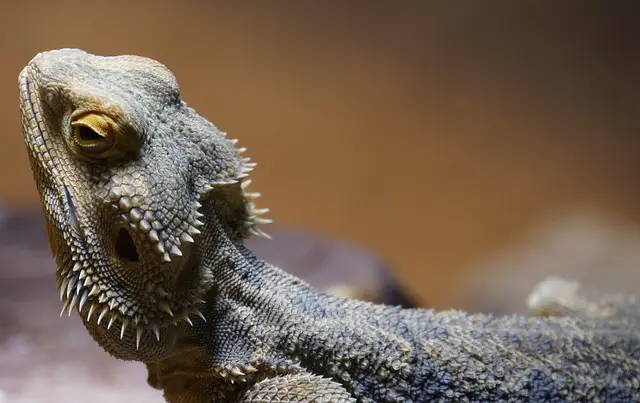There are several different types of chameleons that can be kept as a pet and the veiled is one of the most common.
These animals have a striking cask on the top of their head that gives them a distinct and attractive appearance.
They’re hardy little creatures but they do require a good amount of care and when taking one on for the first time, it is essential that beginners pay close attention to the needs of the chameleon.
If you are considering adopting a veiled chameleon, you are in the right place. We have put together this simple, yet effective care guide that tells you everything you need to know to make sure your pet is well looked after.

Veiled Chameleon Facts
The veiled chameleon can grow to be around 18 to 24 inches in length, and this is largely in relation to the gender with females being much smaller.
They’re relatively long-lived animals and typically have a lifespan of five years or more.
Veiled Chamleon Behaviour
If you are looking for a pet that can be handled and given physical affection then a veiled chameleon is probably not the right animal for you.
While these lizards aren’t typically aggressive to humans, being handled can cause them stress and so they are much better for observing.
As a general rule, the veiled chameleon is quite docile, however, if they are placed in an enclosure with others, they may become aggressive.
This is mainly down to their territorial nature and they will fight for dominance so it is essential that you only keep on veiled cham in each enclosure.
Veiled Chameleon Housing
While a lot of reptiles are kept in glass homes, this is not suitable for the veiled chameleon. These animals require a good amount of ventilation and this means that their enclosure should be made from mesh.
You will also need to consider what you place on the base of the enclosure. You should line it with newspapers and cover this in an appropriate substrate.
For veiled chameleons, it is essential to never use bark or substrate that is made up of larger pieces as these could pose a choking hazard. Instead, fine dirt or sand should always be used.
Your chameleon is an arboreal animal meaning that it spends its life in the trees, so naturally, the enclosure will need to have a good amount of plants for your pet to climb.
Plants must be non-toxic and the branches will need to be wide enough to comfortably accommodate the chameleon’s feet.

What’s more, you will need to ensure that the enclosure has a variety of environments. A heavily planted area is great for when the veiled cham needs somewhere to hide out but an open area with a heat lamp will allow for basking.
As well as heat, the chameleon will also need at least 10-12 hours of light each day so a full spectrum bulb will need to be installed. Light and heat equipment should be placed above the tank where the chameleon cannot access it.
In terms of space, your pet will need more height than it will width or depth in the enclosure.
Typically speaking, you will need your enclosure to be AT LEAST 48 inches tall but if you have the scope to go bigger, this is always better.
Feeding
Chameleons take most of their water by licking it from plants and for this reason, it is essential that the cage is misting at least four times a day.
This will ensure that there is a good amount of residual moisture and will also help to maintain appropriate humidity levels.
If you cannot commit to misting this frequently, it is possible to install a drip system to aid in this. Humidity must remain at least 50% at all times.
In terms of food, your chameleon will prefer a diet that is mostly made up of insects. These can be purchased from pet stores all over the world and things like crickets should be a staple part of the diet.
However, you might also choose to offer a selection of worms such as butter worms as well as locusts and grasshoppers.
It is a good idea to dust insects with calcium powder and a multivitamin powder to ensure that your pet gets all the vital nutrients it needs.
Since the veiled chameleon is an omnivore, it will also benefit from regular plant and vegetable-based meals, although they don’t require these as much as insects.
Things like apples, courgette, pear, blueberries, and red pepper are all viable options.
Adult chameleons might not eat as much as juveniles but it is still important to feed your pet every day. If there is any leftover food in the cage, this should be removed to prevent bacteria and infection.
This is especially true of live prey.
Health And Hygiene
The veiled chameleon will shed its skin regularly so it is important to make sure that it has a shedding box that contains sphagnum moss as this will make the process easier.
Provide that you take good care of your veiled chameleon, it should live a relatively healthy life. They are hardy animals but there are a few potential problems that are regularly seen.
These include gastrointestinal issues, respiratory conditions and vitamin deficiency.
If you notice that your pet loses its appetite, appears lethargic, doesn’t rotate its eyes, has mucus in the nose or mouth, has swelling or is struggling to breathe, these could be signs of ill health. The animal should be checked by a vet as soon as possible.
Conclusion
The veiled chameleon is one of several types of this lizard that is commonly kept as a pet. These animals are amazing to watch and are best suited to people who already have some experience in taking care of reptiles.
Living an average of five years but up to eight, the veiled chameleon requires detailed care to thrive. But when well looked after, they are hugely rewarding pets.




